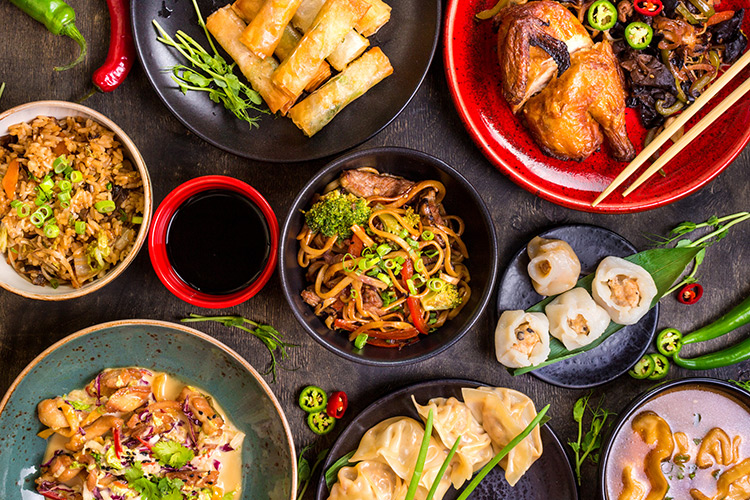The year 2021 tested our patience. It was a year of restrictions — coming, going, returning and for some, resisting — that made consumers expect more out of everything, including food. Did you deliver? There’s no time like the present to reflect, pivot and charge into 2022 with your seatbelt fastened and ready to provide “more” of what today’s consumers want.
The pandemic reshaped how consumers shop, what they shop for and their expectations from those who produce food. The year was one of discovery for many consumers as they learned about the food supply chain. This new-found understanding is not something meat and poultry processors can afford to ignore in their product development and marketing efforts.
It is paramount to offer safe, quality, consistent products that satisfy and satiate, all while being convenient, and wait for it, good for the planet. Yes, consumers have started looking beyond their immediate and personal needs and are now looking to the future. While 2021 may have been the year of wanting more, going forward, that desire has become an expectation.
“One of the biggest shifts we are seeing is that the health of the planet is now the top concern of consumers,” said Lu Ann Williams, Global Insights Director, Innova Market Insights. “Personal health has been the big concern for the past few years, but consumers now tell us that this has been surpassed by global issues. Sustainability is no longer just a Wall Street issue. It might not be the top purchase driver for all consumers, but for many it clinches the deal when it comes to choosing between products.”
A sense of joint responsibility for our shared planet is guiding the choices consumers make and the lifestyles they wish to lead. Innova’s consumer study, conducted across 11 countries, revealed that when it comes to food choices, the top-two environmental actions people are taking are reducing waste (43% of respondents) and eating in moderation (32%).
This needs to be addressed in both retail and foodservice. Portion sizes, packaging and extending shelf life must be considered, all while keeping products simple, clean label, and of course, nutritious.
“Concerns over health have been amplified by the pandemic and have changed social habits,” said Williams. “Continued advancements in technology, coupled with more confident, vocal consumers, all offer clear signs of the direction innovators must take to successfully meet society’s needs and desires in 2022.”
New Habits, New Needs, New Opportunities
New habits produced new needs, which sparked new opportunities for meat and poultry marketers. Variety is key, as people want to mix up what they are eating. In addition to traditional center-of-plate proteins, consumers are frequently downsizing proteins in dishes such as salads and bowls, making portion-controlled packages important. They are also seeking out plant-based proteins and meat-plant blends and adding heat-and-eat meals to their menus.
“Lockdowns and the pandemic have reshaped existing eating occasions while at the same time creating new ones,” said Williams. “Consumers have a greater awareness of the comforts and possibilities of home, so now seek more from going out. Industry leaders will be pushed to better serve evolving consumption occasions, creating products geared to the new expectations of a public whose social habits have been challenged.”
Read more about shifting channels and changing consumer habits.
“Consumers are calling the shots and expecting more engagement from brands through digital and real-world channels,” said Williams. “People are looking for foods that align with their political, social and ethical values. If they can’t find them, entrepreneurial consumers are taking action to fill the gap themselves, satisfying specific market niches and co-creating products that meet their needs.”
Health, responsibility and the simple craving for pleasure will all combine in 2022. This includes delivering amplified and authentic eating experiences.
“While innovators embrace new production methods, consumers turn to apps and artificial intelligence for guidance on personalized nutrition and a greater understanding of how to successfully fulfil their needs.”
Lu Ann Williams, Global Insights Director, Innova Market Insights
Authenticity can include flavors rooted in history and culture as well as the way a particular product was grown, made or produced. Marketers need to engage with consumers and enhance connections with them by sharing stories about how meat and poultry is raised and produced on package labels, social media and in-store signage, as well as with personal interactions using brand ambassadors or store staff.
“From a product development perspective, meat and poultry processors can balance several components to create a great, memorable food experience,” said Garrett McCoy, R&D Manager at Corbion. “It starts with sourcing raw meat components and factors in dietary issues, such as sodium or sugar content.”
Keep reading about why experience matters more to the post-pandemic consumer and how meat and poultry processors can assist.
Wanting experience is all about wanting more, and that’s where formulating meat and poultry with “good” label claims comes into play. Brands are smart to define their own idea of “good” and ensure that their definition aligns with the core user. For many meat and poultry consumers, good has come to mean good for me, good for the animal and good for the planet. These goals may be achievable with simple formulations, natural ingredients and responsible stewardship.
“For decades, the source of food and how it’s made hasn’t really been an important message to consumers,” said Dennis Ryan, Executive Creative Director, Bader Rutter Intel Distillery. “In an increasingly commoditized market, good taste alone isn’t always enough. Between the proliferation of brands and information access, consumers can really scrutinize and choose brands based on whether they align with their values.”
Continue reading about formulating for positive label claims.
The definition of what qualifies as good has taken some interesting twists since the pandemic and provides a lot more room for innovation. Being transparent and communicative is now part of the formulation. While pre-pandemic there was a great deal of consumer pushback on everything from genetically modified organisms to overly processed foods, mindsets have shifted. There appears be some acceptance of modern-day science and its role in contributing to health and global sustainability. This is why traditional meat and poultry processors cannot ignore the burgeoning plant-based movement, which is made possible by advanced technologies.
“When asked what reasons consumers have for considering plant-based alternatives, they tell us they consider it healthier and better for the planet,” said Williams. “Another reason is simply the desire for diet variation.”
Respondents to Innova’s consumer survey said they have become more willing to embrace changes, such as new food technologies. This has fueled innovation in the plant-based sector. There was a 59% increase in new plant-based products that also carry a premium or indulgent claim during the 52-week period from September 2020 to August 2021, as compared to the previous 52 weeks, according to Innova.
“While innovators embrace new production methods, consumers turn to apps and artificial intelligence for guidance on personalized nutrition and a greater understanding of how to successfully fulfil their needs,” said Williams. “Myths and misunderstandings are crumbling, so it has never been more important to engage in honest and open communication with consumers to ensure their continued trust in the advances of food technology.”
Plant-based alternatives are set to grow alongside traditional proteins in 2022 and beyond.
There’s more to come in 2022 as this idea of building better food for consumers and the planet evolves. Research from HealthFocus International shows that 63% of consumers are willing to accept scientific and technical improvements to foods and beverages if they provide desirable benefits and 57% believe processed foods and beverages can be made healthier.
Corbion offers a range of ingredient solutions to assist meat and poultry processors with building better food to help their brand standout in the increasingly competitive marketplace. This includes food-grade acids and plant-based extracts to extend shelf life by either preventing undesirable microbial growth or maintaining desirable color, flavor and texture. Corbion’s vinegar, naturally derived ferments and ingredient blends function as natural, highly effective preservatives in convenience products. Newer vegetable ferments are being developed and tested in order to offer processors more options.
“These ingredients help reduce food waste,” said Ricardo Moreira, Director of Preservation, Corbion. “This is good for manufacturers, consumers and the planet.”


